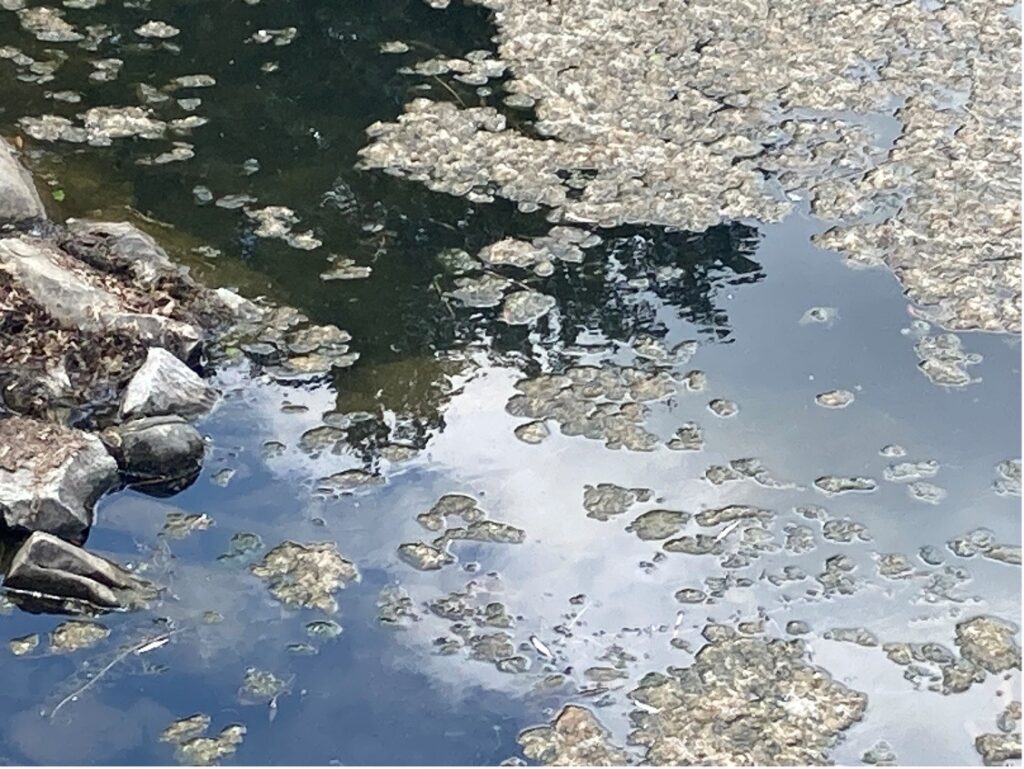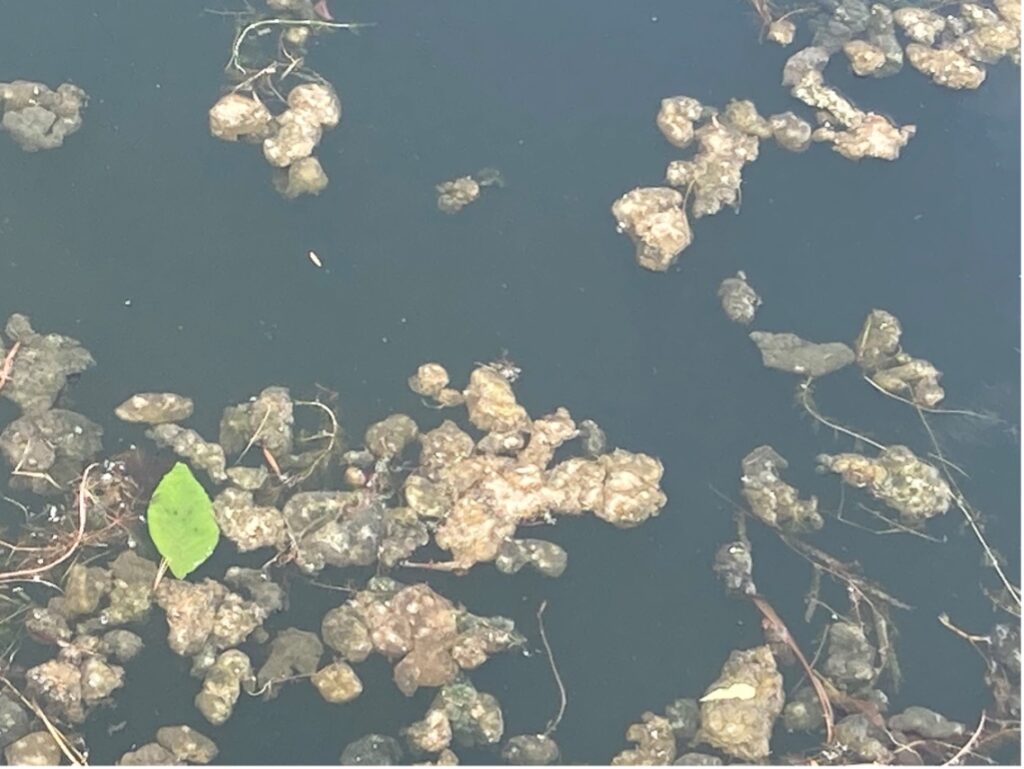As you are enjoying time on Onota lake or another area lake, you might observe some jelly-like, greenish-brownish ‘blobs’ floating in the water. They are often ‘baseball-sized and may be mixed in with wind-blown masses of living and non-living organic matter along shorelines.
You might ask: What are these blobs? Are they harmful?
LOPA has some answers!
These blobs are a harmless colonial microorganism named ‘Ophrydium’. More precisely, the blob is a jelly-like matrix created by the ciliate protozoan Ophrydium versatile. Numerous individual Ophrydium protozoans live in a colony and secrete the jelly-like matrix, forming the ‘blob’ that we can observe.
The matrix then becomes inhabited by many different microorganisms, including green algae, which impart the greenish color. Other inhabitants can include diatoms, bacteria, rotifers, nematodes, copepods, and cyanobacteria. Many of the inhabitants of these colonies live symbiotically (each benefiting the others). So each of these jelly- like blobs is like a miniature ecosystem! (Note that cyanobacteria are a natural component of the lake ecosystem; although some cyanobacteria are associated with harmful algal blooms, their membership as part of the Ophrydium community does not indicate a problem for the lake.)
This organism has no common name, but it might interest you to know that the name ‘Ophrydiium’ comes from a Latin term meaning ‘eyebrow’, which refers to the ‘eyebrow’ shape of the individual protozoan. (They have also been described as appearing like tiny kayaks when viewed under a microscope.)
The buoyancy of these colonies varies, so that sometimes they are near the water surface and sometimes near the bottom (generally in shallow depths). Colony buoyancy results from the production of various gases (including oxygen, carbon dioxide, methane) during metabolism of the various inhabitants of the colony.
So, next time you see an Ophrydium colony in the lake, rather than be concerned, fearful, or grossed out, you might be intrigued by these fascinating organisms that occur naturally in fresh waters across the globe!
Speaking of ‘blobs’ in fresh waters, keep a lookout for other common ‘blobs’, including Bryozoans (‘moss animals’), egg masses of snails, fishes, and amphibians, and some colonial algae and cyanobacteria. Note that while colonial algae and cyanobacteria are typically harmless, some colonial cyanobacteria could conceivably produce toxins, so it is best not to handle any ‘blobs’ you might find.
Here are some photos:
Check out these links for more information on Ophrydium:






